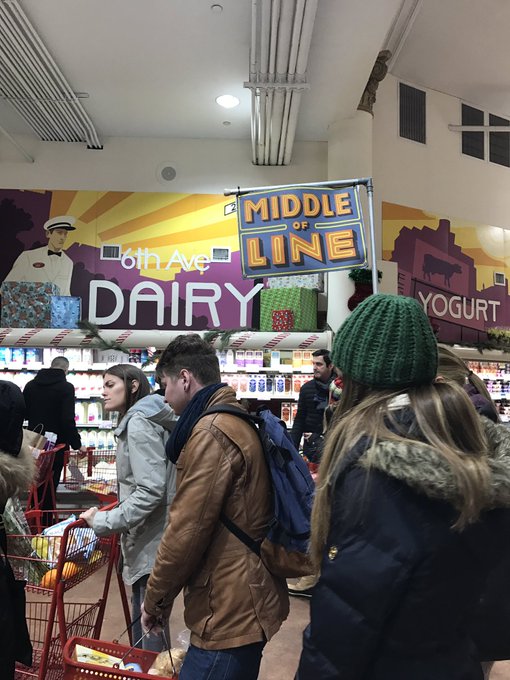Monday was the first day of the rest of Whole Foods Market's life, so to speak, now that it's been officially acquired by Amazon--with big changes promised.
There's a Whole Foods Market at the corner of 7th Avenue and 24th Street in Manhattan, just a few blocks from my office. So I stopped by on my way home from work last night to find out what's different--and what isn't. Here's what I saw:
Lower prices.
Here's the headline grabber: indeed, prices have dropped. Quite a few items had signs that touted what used cost before Amazon bought Whole Foods Market, and of course what they're going for now. So, organic Gala apples? They were $2.99 a pound Sunday, and they're $1.99 a pound today. Haas avocados? They were $2.50 each, are now $1.49.
Bloomberg, Tech Crunch, and Business Insider kind of went to town on this, with the latter compiling a long list of discounted products at a Whole Foods in Brooklyn (hipsters!). Bottom line, prices on a lot of products fell by as much as 43 percent.
Home delivery.
Amazing! Whole Foods will now let you order online and have everything delivered straight to your home! The only thing is, this isn't new. I admit that I had no idea it was a thing, and I will bet that I'm not alone.
For quite some time, you've been able to shop online and get Whole Foods products delivered.
Caveat: Those lower prices I mentioned? At least some of them haven't yet made it to the online interface. The same $1.49 Haas avocados I could have bought in the store were still going for $2.99 each online. And the organic Gala apples cost $3.29 a pound online.
Echo.
Unsurprising, I suppose, but there are now big displays of Amazon Echos and Amazon Echo Dots, for $99.99 and $49.99 respectively, right there in the produce section.
Instacart.
This was sort of in the fine print, but there are signs all over Whole Foods advertising the home delivery option. And they point out that they're powered by Instacart--in which Whole Foods is an investor, and which has a five-year deal with the grocery store chain.
It seems obvious that Instacart would have some of the most to lose as a result of the Amazon-Whole Foods merger. And when the deal was announced in June, an Instacart spokesperson said: "From the beginning, we've been committed to helping grocers compete online. That's more important than ever given Amazon just declared war on every supermarket and corner store in America."
Ouch. Then again, just two days before the Amazon deal, Whole Foods founder and CEO John Mackey called his investors a bunch of "greedy bastards" for trying to find an acquisition. So maybe harsh words ahead of time don't necessarily mean they can't work together.
Long lines.
The lines were long, long, long. But this is New York City, and the lines are always long at Whole Foods Market. However, they zip along pretty quickly. I can't say for sure whether the lines were longer on Monday than they were on any random pre-Amazon day at Whole Foods in New York.
If you are more sane than I am, and live in another part of the country, here's an example of a Manhattan grocery store line. It's from the Trader Joe's a few blocks away from this Whole Foods, but the same principle applies. During the evening rush the line snakes literally through every aisle in the store, and all the way to the entrance.
Or you can check out this video from nine years ago, showing that things haven't changed. (Bonus, you can suddenly bump up the view count on Jeremy Chase's Vimeo account, and he might not know where the call came from.)
People who had no idea.
OK, totally unscientific, but as an experiment I mentioned to about a dozen people that this was the first day of Whole Foods in the post-Amazon era. Of the people who replied, more than half said some variation of, "I didn't know Amazon bought Whole Foods."
Score one for Amazon's promise to retain Whole Foods' branding. And another, I suppose, for the vast majority of Americans who don't follow this stuff anywhere near as closely as we do.





Aucun commentaire:
Enregistrer un commentaire